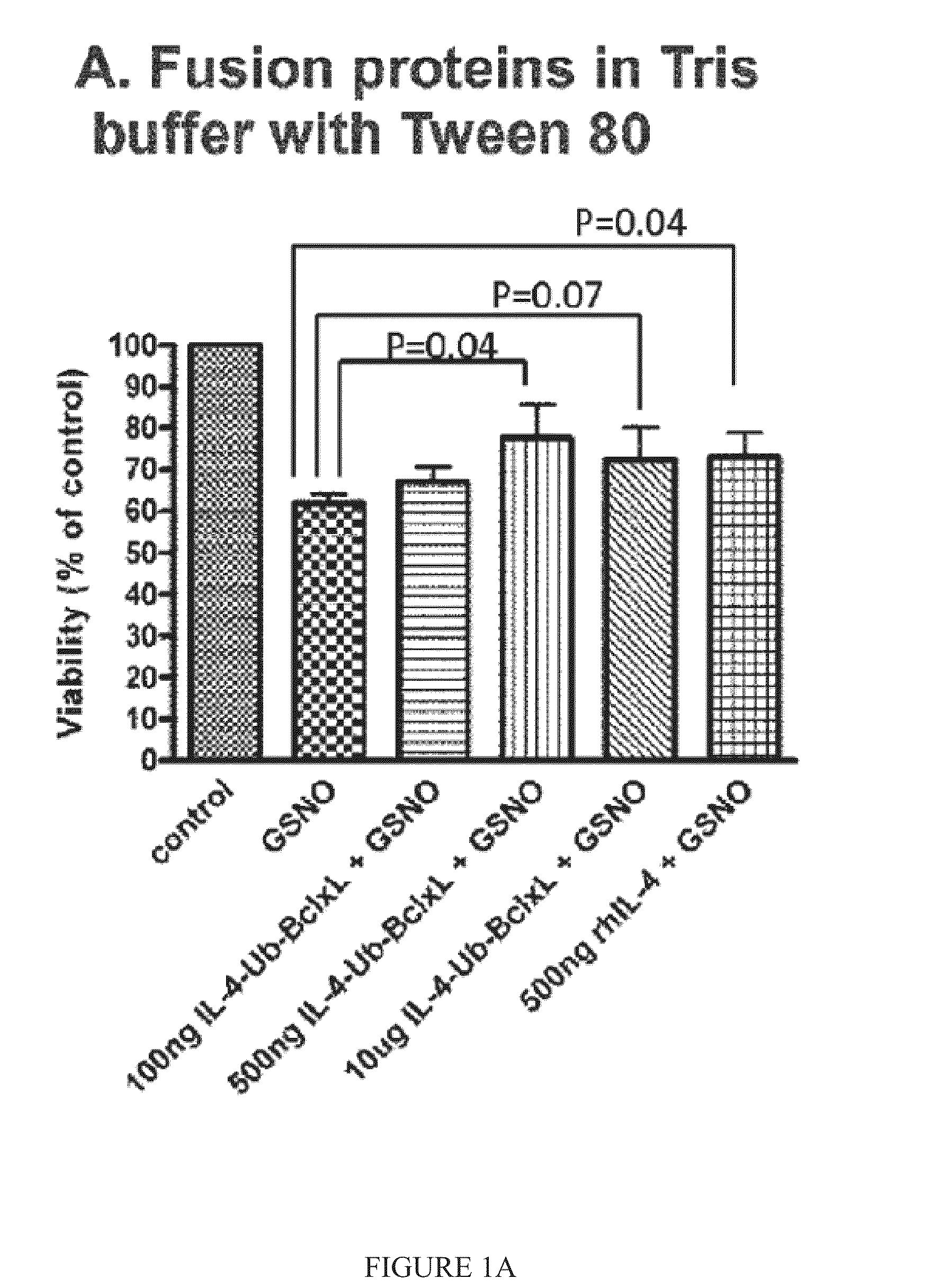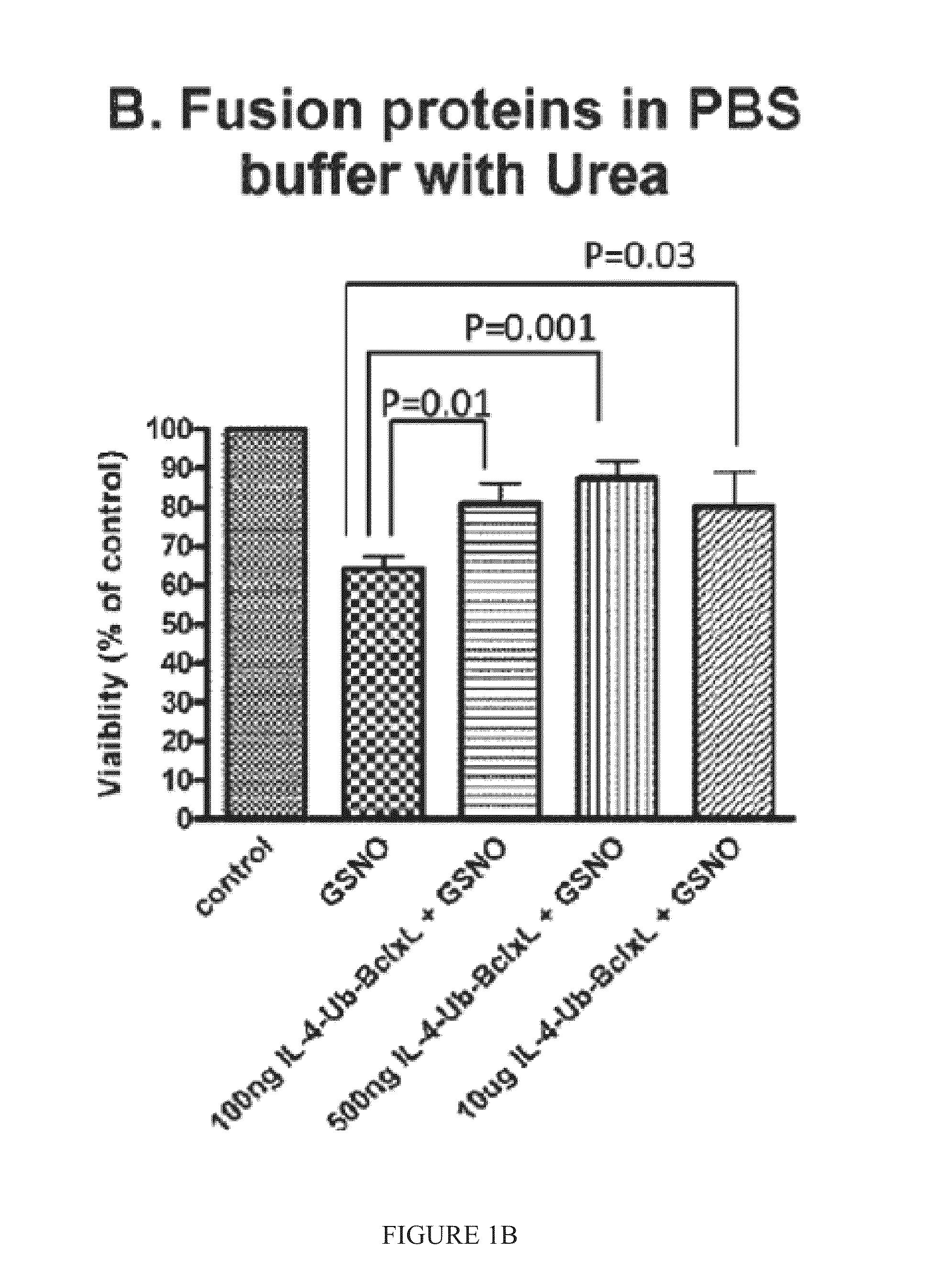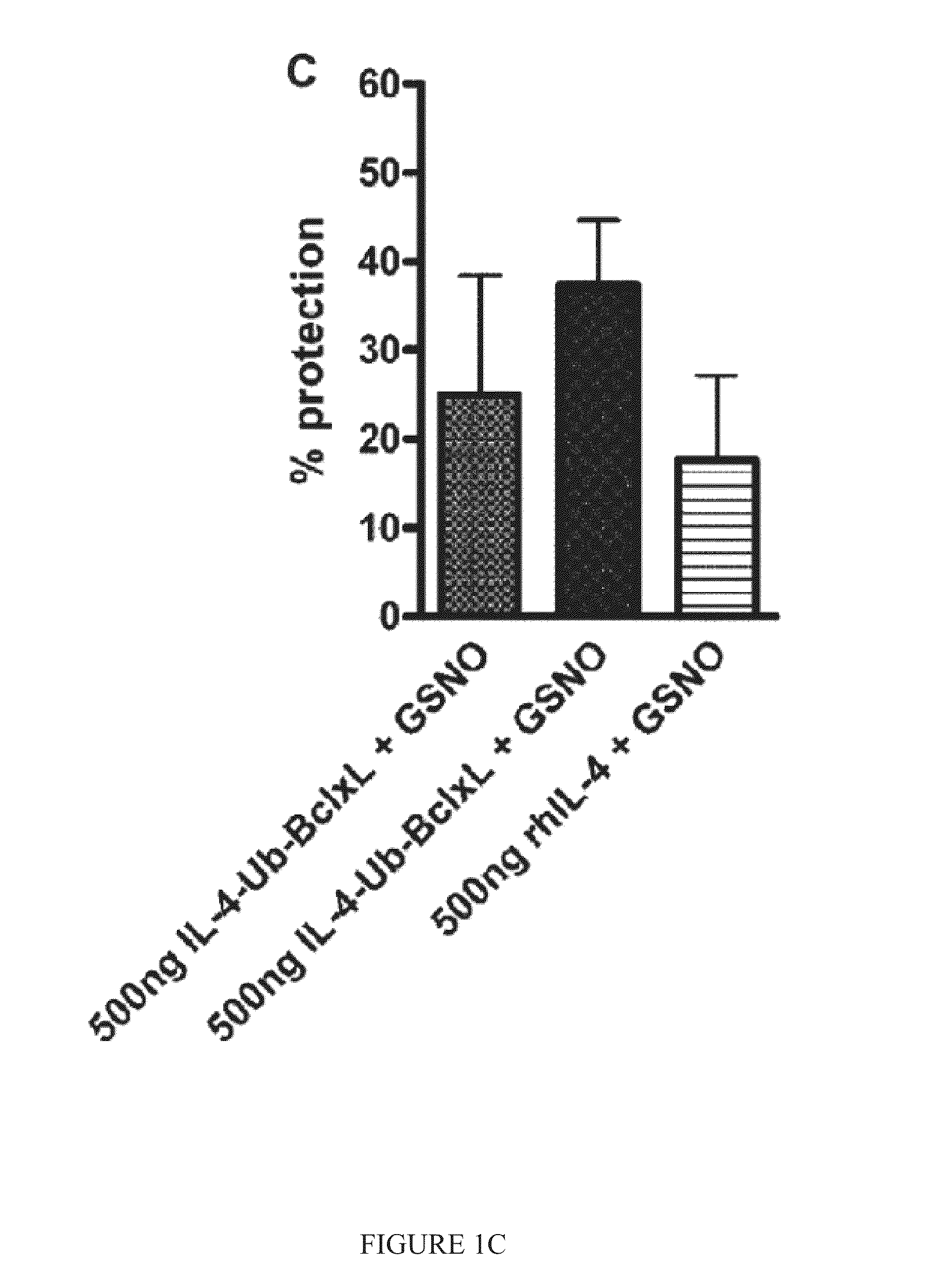Interleukin-4 receptor-binding fusion proteins and uses thereof
a technology of interleukin-4 and receptors, applied in the field of interleukin-4 receptor-binding protein fusion, can solve the problems of limited clinical use limited therapeutic value of cancer and other hyperproliferative disorders, and limited use in the clinic, so as to enhance cell survival, stimulate cell proliferation, and increase cell activation
- Summary
- Abstract
- Description
- Claims
- Application Information
AI Technical Summary
Benefits of technology
Problems solved by technology
Method used
Image
Examples
example 1
[0157]cpIL-4-BclxL fusion protein was prepared using standard techniques, using commercially available recombinant human IL-4 as a reference. The effect of recombinant human IL-4 (rhIL-4) and cpIL-4-Ub-BclxL on neural cell survival, after insult with GSNO or STS, was determined. The results of a number of tests indicated that the fusion protein was more protective.
[0158]In one test, SH-SY5Y cells were incubated with fusions proteins or recombinant IL-4 (rhIL-4) for 2 hours in serum free medium. GSNO (0.25 mM) was added in DMEM and 10% serum for 22 hours. The viability of the cells was assessed by CFDA assay in 2-3 experiments. The fusions proteins were tested in Tris buffer with Tween 80 (FIG. 1A) and in PBS buffer with Urea (FIG. 1B). cpIL-4-Ub-BclxL (500 ng) increased cell survival after GSNO treatment by about 25-40%, while rhIL-4 (500 ng) increased cell viability by only about 15% (FIG. 1C).
[0159]To test the effect of the fusion proteins on neural cell survival in response to ST...
example 2
[0160]Human dendritic cells (DCs) were generated by culturing peripheral blood derived monocytes in granulocyte-macrophage colony-stimulating factor (GM-CSF) and interleukin-4 (IL-4) (FIG. 3A), resulting into immature DCs (iDCs) (FIG. 3B), which are further matured to mature DCs (mDCs) (FIG. 3C) with additional factors and cytokines, using standard techniques. When GM-CSF-Bcl-XL and cpIL-4-Bcl-XL were used to generate human DCs (FIG. 3D), the yield of iDCs was 1.8 times greater than DCs generated by using wild type IL-4 and GM-CSF alone. The phenotype of iDCs generated by both conditions was similar. When iDCs were matured to mDCs (FIG. 3E) the yield of mDCs remained higher using Bcl-XL fused cytokines compared to native cytokines. Gene expression profiling using whole genome transcriptome microarrays (˜35,000 probes) to characterize DCs generated by Bcl-XL cytokines, showed that when monocytes differentiate to iDCs, they dramatically increase gene expression related to transcript r...
PUM
 Login to View More
Login to View More Abstract
Description
Claims
Application Information
 Login to View More
Login to View More - R&D
- Intellectual Property
- Life Sciences
- Materials
- Tech Scout
- Unparalleled Data Quality
- Higher Quality Content
- 60% Fewer Hallucinations
Browse by: Latest US Patents, China's latest patents, Technical Efficacy Thesaurus, Application Domain, Technology Topic, Popular Technical Reports.
© 2025 PatSnap. All rights reserved.Legal|Privacy policy|Modern Slavery Act Transparency Statement|Sitemap|About US| Contact US: help@patsnap.com



